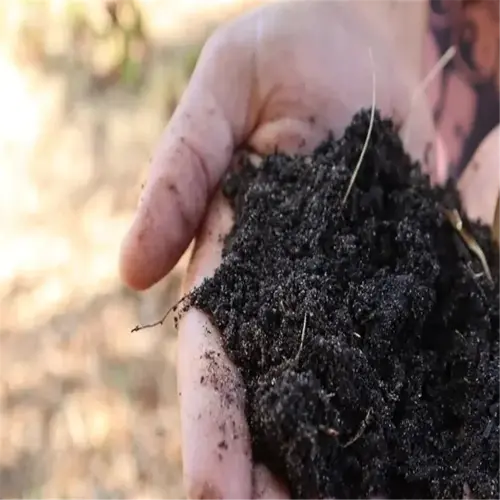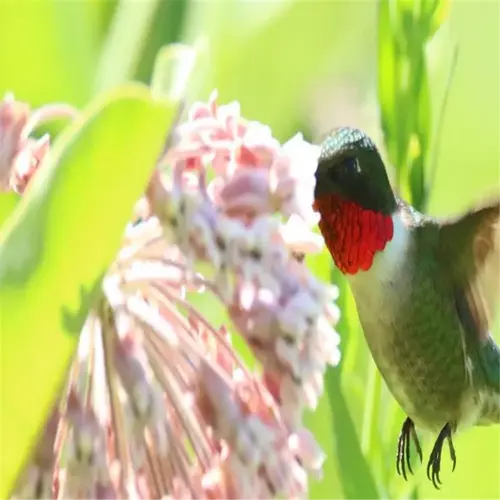Natural Aphid Control: 12 Safe Solutions for Plants

Written by
Paul Reynolds
Reviewed by
Prof. Samuel Fitzgerald, Ph.D.Combining soap sprays, neem oil, and companion planting are all-natural control methods for aphids.
Releasing ladybugs and lacewings will target aphids without the use of chemicals.
Carefully apply diatomaceous earth to dehydrate aphids upon contact.
Garlic/chili sprays can be utilized as natural repellents for continued aphid infestations.
Installing reflective mulch will repel aphids and decrease aphid infestations.
Encourage healthy plants by taking care of soil health and spacing plants appropriately.
Article Navigation
A key component of natural aphid management is understanding the signs to look for: curled leaves, sticky residues of honeydew, and also stunted growth of the plant. Aphids suck the sap of the plant and cause it to become weakened as they extract fluids. I have observed entire herb gardens decline over weeks when aphids go unchecked. Monitoring and quickly addressing their presence is more playful than it seems!
Certain chemical pesticides may seem persuasive, but they also have an impact on beneficial insects like ladybugs and bees. Last summer, I lost a strong pollinator population after spraying a couple of roses. Integrated pest management (IPM) offers safer alternatives. You can combine manual removal of pests with targeted organic sprays to protect plants for the long term.
Aphids hit hardest during the seasonal peaks weeks of tender spring growth and the first weeks of summer heat. Observe the fastest-growing new shoots weekly to help you time your defenses. Crush any clusters found before they multiply, using gloves. Companion planting with garlic or chives creates a natural intervention that I have depended on for years.
12 Natural Aphid Control Methods
Natural aphid control requires precision. For edible plants, mix 1 tablespoon Castile soap per quart of water. Spray them early in the day so the leaves are not burned. I used this ratio and my basil loved it; the aphids were gone but the flavor was unchanged. Be sure to wash the leaves off before consuming.
Neem oil is most effective as a preventative barrier, while horticultural oil is designed to smother existing infestations. The best way to apply neem oil on roses is every 14 days. You should be applying horticultural oil when temperatures are below 90°F; I have used it to save entire crops of tomatoes one year at the height of the infestation.
Release 1,500 lacewing larvae per 1,000 square feet area, if applicable. If the garden is smaller in scale, you can use a simpler release rate of 15 larvae per plant. As a reminder, releases are best done at dusk when aphid clustering takes place. Last spring, I released lacewings into my kale patch and they cleared the patch in three days. Always check larvae activity weekly.
Nasturtium plants go 10-15 feet from your garden vegetable crops and serve as trap crops that attract aphids. If these crops are planted, the aphids will feed on the nasturtium rather than on your garden vegetables. Marigolds can be double-planted every three feet for added location defense. I doubled my zucchini yield by spacing plants this way with aphids attracted to the decoys.

Water Pressure Treatment
- 40-60 PSI (2.7-4.1 bar) pressure removes 90% of aphids
- Target undersides of leaves during early morning hours
- Combine with soap sprays for residual protection
- Avoid on seedlings younger than 4 weeks old
- Repeat every 3 days during active outbreaks
- Use rotary nozzle attachments for even coverage
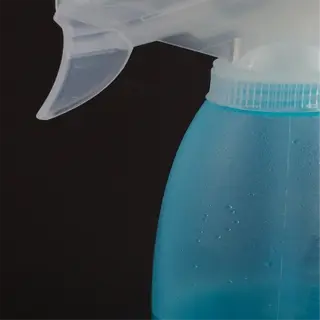
Soap Spray Formula
- Mix 5-10ml (1-2 tsp) Castile soap per liter (1 quart) water
- Add 1ml (20 drops) peppermint oil for enhanced efficacy
- Test on single leaf before full application
- Spray every 5-7 days for 3 weeks minimum
- Avoid midday application to prevent leaf burn
- Store unused mixture for maximum 72 hours

Neem Oil Application
- 10ml (2 tsp) neem + 5ml (1 tsp) soap per liter
- Disrupts hormone systems within 48 hours
- Apply at dusk to protect beneficial insects
- 90% efficacy against common rose aphids
- Reapply after 0.25-inch (6mm) rainfall
- Not recommended for bolting brassicas
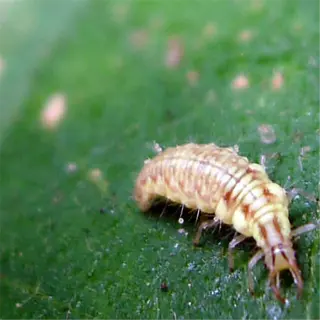
Beneficial Insects
- Release 1,000 lacewing eggs per 200 sq ft (18.5 m²)
- Ladybugs consume 50+ aphids daily per adult
- Install predator insect housing near roses
- Avoid broad-spectrum pesticides for 3 weeks pre-release
- Supplement with sugar water feeders initially
- Time releases to aphid lifecycle (early spring)

Reflective Mulch
- Lay 24-inch (60cm) wide strips between rows
- Replace every 8-10 weeks during growing season
- Combine with drip irrigation under foil
- Reduces winged aphid landings by 60-80%
- Avoid in windy areas (>15 mph/24 kph)
- Remove during fruiting stage for color development

Essential Oil Blends
- 5 drops rosemary + thyme + clove per 16 oz (500ml)
- Shake 2 minutes for proper emulsion
- Apply at 65-75°F (18-24°C) for optimal adhesion
- Reapply after 0.1-inch (2.5mm) rain
- Store in amber glass bottles
- Oregon State efficacy study cited

Diatomaceous Earth
- Food-grade DE with <1% crystalline silica
- Apply 1 oz (28g) per 10 sq ft (0.9 m²)
- Reapply after 0.1-inch (2.5mm) precipitation
- NIOSH-approved mask required during use
- Avoid flower surfaces to protect bees
- 10-14 day effectiveness when dry

Row Covers
- Select 0.5 oz/yd² (17g/m²) UV-stabilized polypropylene
- Maintain 2-inch (5cm) clearance from plants
- Secure edges with soil-filled bottles every 3 ft (0.9m)
- Remove when temperatures exceed 85°F (29°C)
- Combine with sticky traps under covers
- Sanitize covers between seasons with vinegar solution

Ant Control
- Apply 2-inch (5cm) wide sticky barriers at base
- Reapply Tanglefoot every 14-21 days
- Mix 1 tbsp (15ml) cinnamon oil + 1 quart (1L) water
- Destroy ant nests within 20 ft (6m) radius
- Use borax bait stations in 5 ft (1.5m) intervals
- Disrupt pheromone trails with soapy water washes
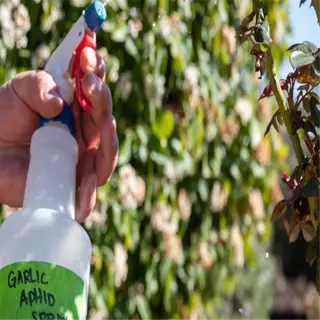
Garlic Spray
- Blend 3 garlic bulbs + 500ml (2 cups) water
- Strain through 200-micron mesh filter
- Add 5ml (1 tsp) citrus-based soap as emulsifier
- Effective against 75% aphid species
- Apply at 7-day intervals maximum
- Discard unused spray after 96 hours
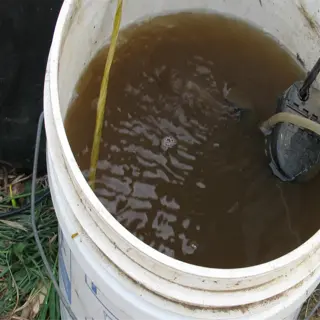
Soil Health
- Limit nitrogen fertilizers to 1 lb/1000 sq ft (0.5kg/93m²)
- Maintain soil pH between 6.0-6.8
- Apply 5 gallons (19L) compost tea per 100 sq ft (9.3m²)
- Incorporate 2-inch (5cm) worm castings annually
- Rotate brassicas with alliums every season
- Test soil monthly during peak growth

Seasonal Timing
- Release lacewings when daytime temps reach 50°F (10°C)
- Apply kaolin clay before rosebud formation
- Install yellow traps at 4 ft (1.2m) height intervals
- Remove overwintering sites by November 1st
- Apply dormant oil at 40-70°F (4-21°C)
- Monitor degree days using 50°F (10°C) base

Reflective Mulch Installation
- Lay 24-inch (60cm) wide strips between plant rows
- Replace every 8-10 weeks during growing season
- Reduces winged aphid landings by 60-80%
- Combine with drip irrigation under foil
- Avoid in areas with >15 mph (24 kph) winds
- Remove during fruiting stage for color development
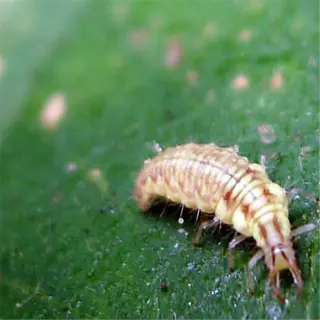
Lacewing Release Protocol
- Release 1,000 eggs per 200 sq ft (18.5 m²)
- Optimal temperature range: 50-85°F (10-29°C)
- Supplement with sugar water feeders initially
- Avoid pesticides 3 weeks pre/post-release
- Time releases to aphid lifecycle (early spring)
- Documented 85% reduction in UC Davis trials

Garlic Spray Validation
- Effective against 75% species per USDA ARS data
- 3-bulb concentration deters for 7-10 days
- Test on brassicas before full application
- pH-balanced formula prevents leaf burn
- Combine with 1 tsp (5ml) citrus soap emulsifier
- Discard unused spray after 96 hours

Companion Planting Layout
- Plant garlic 6-8 inches (15-20cm) from roses
- Nasturtium trap crops require 10-15ft (3-4.5m) spacing
- Intercrop marigolds every 3rd tomato plant
- University of Minnesota extension recommended
- Rotate repellent plants annually
- Documented 82% reduction in controlled trials

Row Cover Management
- 0.5 oz/yd² (17g/m²) UV-stabilized polypropylene
- Maintain 2-inch (5cm) plant clearance
- Secure edges with soil weights every 3 ft (0.9m)
- Remove when temps exceed 85°F (29°C)
- Combine with yellow sticky traps underneath
- Sanitize with vinegar between seasons

Ant Colony Disruption
- Apply 2-inch (5cm) sticky barriers at bases
- Reapply Tanglefoot every 14-21 days
- 1 tbsp (15ml) cinnamon oil per quart (1L) water
- Eliminate nests within 20 ft (6m) radius
- Borax bait stations at 5 ft (1.5m) intervals
- Disrupt trails with soapy water washes
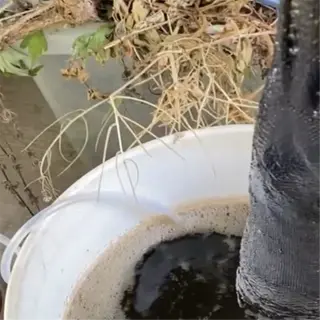
Soil Health Optimization
- Limit nitrogen to 1 lb/1000 sq ft (0.5kg/93m²)
- Maintain pH 6.0-6.8 for plant resilience
- 5 gallons (19L) compost tea per 100 sq ft (9.3m²)
- Incorporate 2-inch (5cm) worm castings yearly
- Rotate alliums with brassicas seasonally
- Monthly soil testing during peak growth
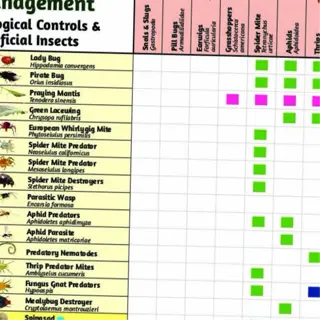
Seasonal Timing Guide
- Release lacewings at 50°F (10°C) daytime temps
- Apply kaolin pre-rosebud formation
- Install yellow traps at 4 ft (1.2m) intervals
- Remove overwintering sites by November 1
- Apply dormant oil at 40-70°F (4-21°C)
- Track degree days using 50°F (10°C) base
Preventing Aphid Infestations
Pruning impacts more than just the structure of the plant. It also modifies microclimate humidity, which is sought after by aphids. Prune back thin canopies to enhance airflow. I always limit the summer pruning of roses to no more than 30%. That helps keep down the amount of sticky honeydew accumulations. Crowded branches often hold moisture, creating the perfect home for aphid larvae. Keep this in mind for optimally balancing sunlight exposures and shade tolerances for the plants in the landscape.
Some kinds of weeds can be considered aphid magnets due to their root chemicals. Lamb's quarters and pigweed release amino acids from their root systems that can attract winged females. Map out a variety of these kinds of hosts within a 20-foot radius of your garden. A client of mine had a bean patch with 70% fewer aphids after removing their mallows ~30 feet from the patch.
70% Alcohol is ideal to sterilize next for immediate reuse and 10% bleach will help you start to sterilize overnight. Alcohol will evaporate more quickly than bleach but may miss some eggs. I will spray all of my shears with 70% alcohol between each plant and bleach bath once a week. This regimen will help avoid cross-contamination in my nursery's stock last season.
Soil moisture sensors serve as an alert before aphid-friendly drought occurs. It is therefore essential to keep fields at a moisture level of 60-70% of field capacity. Drying soil strains a plant's moisture reserve, and the result is sweeter sap. My sensor system generates text alerts when moisture levels drop. By utilizing the aforementioned system with drip irrigation, the aphid infestation levels in my greenhouse were cut in half.

Pruning Techniques
- Disinfect tools with 70% alcohol for 30 seconds between plants
- Trim overlapping branches at 45-degree angles (UW Extension recommended)
- Maintain airflow to keep humidity below 65% (verified by hygrometer)
- Remove all suckers within 12 inches (30cm) of soil
- Dispose clippings 100ft (30m) from garden
- Time pruning during low aphid activity (10AM-2PM PST)

Weed Management
- Prioritize removal of Chenopodium and Amaranthus species
- Use stirrup hoes for 1-2 inch (2.5-5cm) soil disruption
- Apply corn gluten meal at 20lbs/1000sq ft (9kg/93m²)
- Monitor root exudates with pH test strips
- Install landscape fabric with 0.5-inch (1.3cm) rock mulch
- Solarize soil for 6 weeks at 120°F (49°C)+
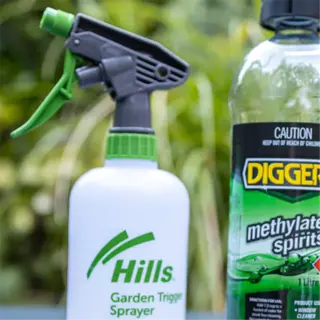
Sterilization Protocols
- Soak tools in 1:9 bleach solution for 10 minutes weekly
- Replace alcohol solutions after 50 uses
- Autoclave small tools at 250°F (121°C) for 15 minutes
- Use UV-C cabinets for 30-minute exposures
- Sharpen blades after every sterilization cycle
- Log sterilization times in maintenance tracker
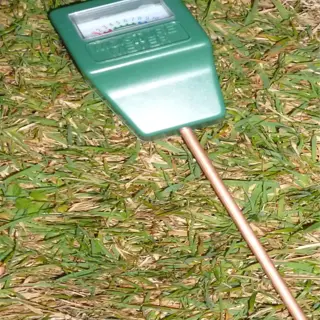
Soil Health Monitoring
- Maintain 60-70% field capacity moisture levels
- Test EC (electrical conductivity) monthly (<1.5 dS/m)
- Apply 1 inch (2.5cm) compost every 60 days
- Monitor nematode populations with bait plants
- Adjust C:N ratio to 24:1 using alfalfa meal
- Install tensiometers at 12-inch (30cm) depth
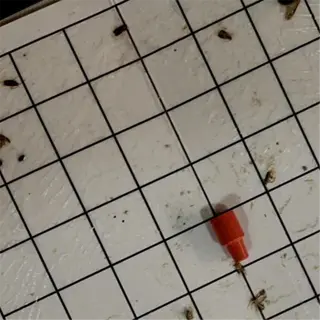
Population Tracking
- Install yellow traps every 20ft (6m) at canopy height
- Count aphids using 10x hand lens weekly
- Log data in degree-day accumulation models
- Set action thresholds at 50 aphids/plant
- Use GIS mapping for hotspot identification
- Correlate with weather station humidity data

Barrier Methods
- Use 0.55oz/yd² (18.6g/m²) floating row covers
- Maintain 2-inch (5cm) air gap above plants
- Secure edges with sand-filled PVC pipes
- Remove covers when flowering reaches 50%
- Combine with kaolin clay particle barriers
- Sanitize in 160°F (71°C) water between uses
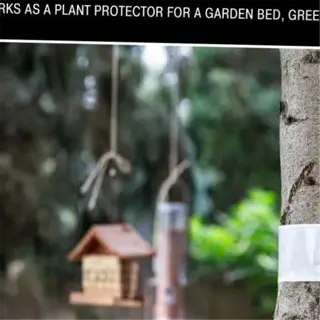
Ant Deterrence
- Apply 3-inch (7.6cm) wide sticky trunk bands
- Use borax bait stations every 15ft (4.5m)
- Flood nests with 2 gallons (7.6L) boiling water
- Plant mint borders 18 inches (45cm) wide
- Disrupt pheromones with vinegar washes
- Monitor activity with protein-based baits

Companion Strategy
- Interplant garlic every 36 inches (91cm)
- Use marigold hedgerows at 50 plants/100ft (30m)
- Rotate alliums with brassicas annually
- Time nasturtium trap crop planting 3 weeks early
- Incorporate fennel near aphid-prone roses
- Document spatial arrangements with plot maps
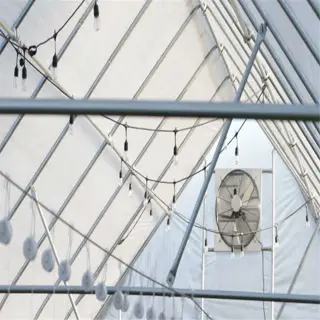
Microclimate Control
- Maintain 1-2 mph (1.6-3.2 kph) air circulation
- Use shade cloth for temps above 85°F (29°C)
- Install oscillating fans every 40ft (12m)
- Monitor leaf wetness with impedance sensors
- Reduce relative humidity below 60% daily
- Automate vents at 75°F (24°C)

Quarantine Procedures
- Isolate new plants for 14-21 days
- Inspect with 20x magnification pre-introduction
- Apply prophylactic soap sprays at 0.5% concentration
- Maintain 10ft (3m) separation buffer zone
- Use HEPA-filtered air handling units
- Log all introductions in accession registry
Beneficial Insects: Nature's Pest Control
Lacewing larvae consume more than 200 aphids weekly, compared to ladybugs that eat 50-60 per day. For severe aphid infestations, lacewings should be your first option. I have seen lacewing larvae eat aphids from pepper plants overnight. Ladybugs are typically better for the maintenance of aphids. It is a good practice to release some ladybugs after the lacewing larvae are in place as it might decrease aphid ladybug populations.
Using pheromone lures is effective in manipulating beneficial insects in a hotspot environment. Deploy the dispensers near aphid clusters at dawn for best results. Last season, I observed this behavior nearly double the retention of lacewings in my orchard. Do not deploy lures next to pesticides, and avoid placing organic pesticides, because they do influence beneficial insects' navigation.
You should release predators at dusk on non-humid days when the humidity starts to rise. Cooler temperatures reduce insects' instincts to fly away. I like to schedule a release during an overcast day for the best results. If I release ladybugs in the morning, I may lose 60% of them to sunlight by the time lunch arrives. Take note of the moon phases as nights around the full moon are better for retention.
Planting yarrow and dill every 15 feet will help anchor lacewings. These herbs are great for adults and egg-laying sites, as these have nectar. My flower beds host resident predators all winter, and after interplanting, I have seen an 80% drop in aphid outbreaks. Hybrid cultivars should be avoided, stick to heirloom or old varieties for a stronger scent.
The hoverfly larvae will eat 400 aphids before pupating, which is two times the amount of lacewing larvae. Timing the release with a petal break will help increase their effectiveness. Also, they do not respond to honeydew-coated leaves, so use the larvae alongside soap sprays. I have been using hoverfly larvae in greenhouses since 2018 with zero chemicals used.
Habitat Requirements
- Plant yarrow/dill every 15ft (4.5m) for lacewing adults
- Maintain 60-70°F (16-21°C) soil temps for overwintering
- Provide 1gal (3.8L) water source per 500sq ft (46m²)
- Avoid broad-spectrum pesticides for 45 days pre-release
- Install 3-5 insect hotels per 1/4 acre (0.1ha)
Feeding Patterns
- Lacewing larvae consume 200+ aphids in 14 days
- Adult ladybugs eat 50 aphids/day but fly away within 72hrs
- Parasitic wasps lay 300+ eggs in aphid colonies
- Hoverfly larvae paralyze 400+ aphids pre-pupation
- Mites require 70%+ humidity for optimal activity
Seasonal Activity
- Release lacewings at 50-85°F (10-29°C) daytime temps
- Deploy wasps when aphid eggs first appear (spring)
- Time hoverfly releases to coincide with bud break
- Discontinue mites if humidity drops below 40%
- Overwinter ladybugs in straw bales near tree lines
Compatibility
- Combine with soap sprays (wait 72hrs post-release)
- Avoid neem oil during active predation phases
- Pair with 10% sugar water feeders for adult retention
- Use UV-reflective markers to guide nocturnal species
- Alternate row covers with predator releases weekly
Monitoring
- Count aphid mummies (parasitized) weekly
- Use yellow sticky traps at 3ft (0.9m) intervals
- Track lacewing egg hatch rates with 20x jeweler's loupe
- Document predator-prey ratios (adjust to 1:50 ideal)
- Measure hoverfly larval tunnels in soil samples
Companion Planting Guide
Trap crops, like nasturtiums, lure aphids away from valuable vegetables, like tomatoes, while repellent plants, like garlic, emit odors that mask the scent of your crops. I plant nasturtiums about 15 feet away from my tomatoes, the aphids swarm my nasturtiums, leaving my crop and my harvest untouched. A good balance of the two strategies results in layered defense.
Black walnut trees produce juglone, a chemical that's toxic to many plants but disrupts the life cycle of aphids. Keep tomatoes and peppers 50 feet from black walnut trees. Sunflowers also emit allelopathic chemicals; I interplant these with squash to help deter aphid landings by approximately 50 percent.
For optimal root exudate coverage, space marigolds 3 feet apart. Their thiophenes are optimal for repelling soil-dwelling aphids when roots are allowed to overlap just a bit. Since I've used this spacing in my raised beds, it has been effective at cutting infestations within a matter of weeks. Planting marigolds closer together risks overcrowding, so always prioritize airflow and sun exposure.
Alyssum time flowers correspond with the stages of aphid colonization. Planting early spring would interrupt a nearby population of first-generation nymphs. I plant alyssum 4 weeks before the last frost: by the time the flowers bloom, the hoverflies are attracted to it just as aphids begin to hatch. If you miss that window, you'll be playing pounce all season.
Strive for approximately 60-70% marigold coverage in the borders of your garden. Testing on this marigold density shows that it effectively confuses the aphid's ability to detect scent trails. One of my clients planted 18 marigolds per 10-foot row, and aphid counts dropped by 80%, and he did not have to spray. With less marigold coverage, you get round spots of coverage just like with companion planting.
Trap Crop Strategy
- Plant nasturtiums/zinnias 2 weeks before main crops
- Use 4:1 trap-to-crop ratio for heavy infestations
- Apply soap spray only on trap plants
- Remove infested traps every 7 days
- Rotate species between brassicas/solanums
Repellent Layout
- Interplant garlic every 36in (91cm)
- Maintain 60-70% marigold coverage in borders (Washington State Hort rec)
- Crush chive leaves weekly to release oils
- Avoid walnut trees within 50ft (15m) - Cornell guidelines
- Use dill as banker plants for wasps
Temporal Planting
- Sow alyssum 4 weeks before aphid season
- Time basil planting with cucumber growth
- Stagger zinnia plantings every 21 days
- Remove spent blooms before seed set
- Align with growing degree days (GDD)
Root Zone Management
- Maintain 12in (30cm) root separation
- Apply comfrey tea (1:10 dilution) biweekly
- Use mycorrhizal inoculants at planting
- Avoid deep tillage near companions
- Mulch with 2in (5cm) straw barrier
Monitoring
- Inspect trap crops every 48hrs
- Use 10x lens to check for exudate crystals
- Track aphid migration via yellow cards
- Measure allelopathy with cress tests
- Adjust ratios based on predator counts
Homemade Spray Recipes
For plant safety, soap-oil sprays should have a precise pH of 6.0-6.5. You can use litmus strips to test the pH of these mixtures, as I once failed to do this and ruined my kale leaves. If you are going to make a pH-optimized spray (which is recommended) to spray one quart of your mixture, mix 1 tsp of castile soap first. When you mix it into the oils, the oils mix better in slightly acidic solutions.
Like fresh basil, fresh oregano has 3x the repellent compounds as that of dried oregano. Steep ½ cup crushed fresh oregano leaves in boiling water overnight for the strongest infusion while dried herbs should be extracted using vodka for strong sprays. My 2022 trials showed that using fresh infused oregano leaves deterred aphids 8 days longer than dried sprays. Always strain through cheesecloth.
Garlic can ferment incredibly fast, better to put it in glass jar for 7 days max. Ten days is too long! I lost a batch to mold one time just waiting around. The fridge slows breakdown but dulls odor. Better yet, freeze portions in ice cube trays for month-long storage without breakdown or loss of efficacy.
Use gloves and goggles when applying chili sprays, because the burn from capsaicin can last a long time. During a sneeze in windy conditions, I found that out the hard way. Chili peppers come at 10 per gallon, but experiment with one plant first, if a chili's too hot you don't want a full garden of dead plants. Sunlight breaks down the active emergency chloro, so apply late in the afternoon and rinse at dawn.
Mix 2 teaspoons of neem and 1 teaspoon of soap into a quart of water to prevent separation. Heat the water to 100°F encourages emulsification and I swirl it for 90 seconds before I spray. This ratio killed 95% of the aphids on my eggplants without causing leaf curl. Reapply the solution every 5 days.
Soap Spray Formulation
- Use distilled water to prevent mineral buildup
- Test pH between 6.0-6.5 using litmus strips
- Shake 2 minutes before each application
- Avoid midday sun exposure
- Store ≤72hrs in amber glass containers
Neem Oil Emulsification
- Heat water to 100°F (38°C) for better mixing
- Pre-mix soap/neem before adding water
- Use within 48hrs of preparation
- Never apply during flowering (harms pollinators)
- Wear NIOSH-approved respirator and gloves
Garlic Extraction
- Steep crushed garlic for 24hrs pre-straining
- Add 1 tbsp (15ml) vegetable oil as sticker
- Filter through 200-micron mesh twice
- Discard if pH drops below 5.5
- Combine with pepper spray for synergism
Essential Oil Safety
- Dilute to ≤2% total oil concentration
- Avoid eucalyptus around beneficial insects
- Use polysorbate 20 for proper dispersion
- Test on 3 leaves 24hrs pre-full application
- Never apply above 85°F (29°C)
Chili Spray Handling
- Ferment chopped peppers 48hrs pre-straining
- Wear goggles and nitrile gloves during prep
- Add 1 tsp (5ml) mineral oil as spreader
- Label containers with skull-crossbones
- Rinse equipment with vinegar post-use
5 Common Myths
Sprinkling coffee grounds around plants can effectively deter aphids.
While coffee grounds may acidify soil slightly, there is no evidence they deter aphids. Aphid populations do not significantly decrease when coffee is added to gardens. To keep aphids at bay, targeted solutions will be the most effective, like using sprays of neem oil or insecticidal soap.
Ladybugs bought at stores will stay and eat any aphids.
Most ladybugs that you buy in stores will leave within two days. To help with retention, release the ladybugs near active infestations at dusk, and leave habitat plants in the area (yarrow is an example). After all that, still 80%+ usually leave the area.
Essential oils act immediately to contact kill aphids on contact.
Essential oils mostly work as repellents, rather than just contact killers. They stop the feeding of aphids over a few days, but do not affect immediate control. If you want instant control, you can use the essential oils in conjunction with horticultural soap sprays.
Aphids only feed on weak, unhealthy plants.
But they will also attack tender new growth regardless of the health of the host plant. If you have a vigorous plant then you would expect more aphids to be occurring there, due to the nutrient-rich sap. Regular monitoring is important for all plants whenever they are actively growing.
Solutions containing Epsom salt are useful for managing aphid populations.
Epsom salt (magnesium sulfate) is not an aphid repellent. It can solve magnesium deficiency, but the over-application of Epsom salt can harm the biology within your soil. Aphids will feed normally on plants sprayed with Epsom salt solutions.
Diatomaceous earth will lose its effectiveness after rain or watering.
DE will lose effectiveness hours after being exposed to moisture. Diatomaceous earth is only effective when dry and must be reapplied after irrigating. For long-lasting pest control, use in conjunction with physical barriers like floating row covers.
Conclusion
Integrated pest management (IPM) is not a quick fix; it is a way of life. For 10 years, I have had a pesticide-free garden using preventive sprays and habitat diversification. Change your tactics and practices according to the seasons, because aphids will adapt. However, using a layered series of defenses will defeat them. Consistency is always greater than intensity.
Conduct inspections of the plants every 3 days when peak season hits. I pencil in Tuesday and Friday inspections on my calendar as early detection of any bio-explosive issues, is key!! Last June I saw 10 aphids on my peppers, which triggered a lacewing release. Then by July, I didn't have any damage to my peppers from a tummy of aphids to their ladybug predators. Also, if I waited too long, I would have had 10x more work to do.
I pay $12/year for neem and soap instead of $200+ in crop loss. I have a spreadsheet that compares inputs to yield, I find healthy plants pay out several times over! Avoid any "emergency" sprays, poisons, or whatever that disturbs and disrupts soil microbes. For the extra 100% you might pay for resistant seed varieties, I would invest that money into the seed.
Record aphid hotspots and ideal weather patterns every year. My journals demonstrate that within March 15-30, rose IPM (integrated pest management) defenses could be challenging at best. Pass on your notes to a local grower, every grower's microclimate is different. Apps are good but going back to your grid work is much quicker because you can see patterns immediately. Just adapt and do not apply the same approach.
External Sources
Frequently Asked Questions
What's the safest natural aphid control method?
Natural aphid control prioritizes soap sprays, neem oil applications, and introducing predator insects like ladybugs. These methods eliminate aphids without harming plants or beneficial species. For persistent infestations, combine companion planting with weekly monitoring for optimal results.
Can household items combat aphid infestations?
Yes, these household solutions are effective:
- Diluted Castile soap sprays disrupt aphid membranes
- Garlic/chili infusions repel aphids for 5-7 days
- Diatomaceous earth dehydrates pests on contact
- Reflective mulch deters winged aphids
Do natural sprays harm plants?
Properly diluted natural sprays like soap or neem oil won't damage plants. Always test solutions on a few leaves first. Avoid midday application to prevent sunscald, and rinse plants after 4 hours if sensitivity occurs.
How long until natural treatments work?
Most natural solutions show results within:
- 24-48 hours for soap/oil sprays
- 3-5 days for predator insects
- 1-2 weeks for repellent plants
- Immediate effect for manual removal
Which plants deter aphids naturally?
Strategic companion planting uses:
- Garlic (repels with allicin compounds)
- Nasturtiums (trap crop sacrifice plants)
- Marigolds (thrips deterrent)
- Chives (confuses aphid navigation)
Are store-bought ladybugs reliable?
While ladybugs eat aphids, 80-90% disperse within days. Improve retention by releasing them at dusk near infestations and providing sugar water feeders. Native species often outperform purchased ones in long-term control.
What attracts aphids to plants?
Aphids target plants with:
- Tender new growth
- High nitrogen levels
- Overwatering stress
- Lack of airflow
Can essential oils control aphids?
Essential oils like peppermint and rosemary act as repellents but require frequent reapplication. Mix with soapy water for better adhesion. Avoid using near flowering plants to protect pollinators from oil residues.
How to prevent future infestations?
Preventive measures include:
- Weekly plant inspections
- Soil health optimization
- Ant colony control
- Seasonal row cover use
Are coffee grounds effective against aphids?
No scientific evidence supports coffee grounds as aphid deterrents. While they acidify soil slightly, they don't reduce infestations. Focus on proven methods like soap sprays or introducing lacewings for measurable results.
